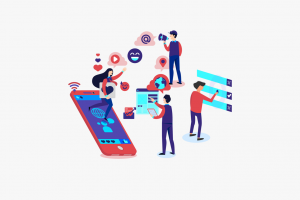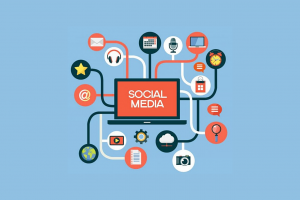Web 2.0 is also known as Participative and Social Web, it refers to websites that emphasize file-sharing, user-generated content, participatory culture and interoperability.

Image source: https://www.maxpixel.net/Social-Media-Social-Marketing-Internet-Mobile-5187243
The term Web 2.0, invented by Darcy DiNucci in 1999 and later popularized by Tim O’Reilly and Dale Dougherty at the O’Reilly Media Web 2.0 Conference in late 2004, describes a second generation of the World Wide Web that is focused on the ability for people to collaborate and share information online. Web 2.0 basically refers to the transition from static HTML Web pages to a more dynamic Web-based on serving Web applications to users. Other improved functionality of Web 2.0 includes open communication with an emphasis on Web-based communities of users and more open sharing of information. Over time Web 2.0 has been used more as a marketing term than a computer-science-based term. Blogs, wikis, and Web services are all seen as components of Web 2.0.

Image source: https://www.maxpixel.net/Internet-Laptop-Screen-Social-Media-Marketing-5437663
With Web 2.0, it became common for average web users to have social networking profiles on sites such as Myspace. Newer Web 2.0 examples include hosted services (Google Maps), Web applications ( Google Docs, Flickr), Video sharing sites (YouTube), wikis (MediaWiki), blogs (WordPress), social networking (Facebook), folksonomies (Delicious), Microblogging (Twitter), podcasting (Podcast Alley) & content hosting services and many more.
Info source:
https://en.wikipedia.org/wiki/Web_2.0
